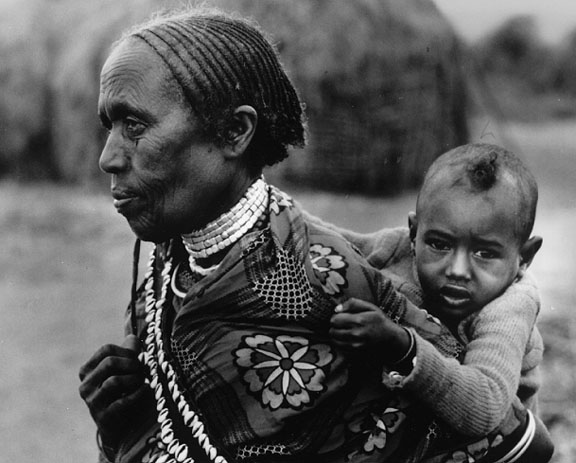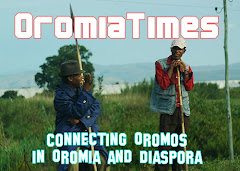By MOHAMED OLAD HASSAN
At least one U.S. airstrike in Somalia that targeted an al-Qaida cell wanted for two 1998 U.S. embassy bombings killed large numbers of Islamic extremists, government officials said Tuesday.
The attack came after the terror suspects were spotted hiding on a remote island on the southern tip of Somalia, close to the Kenyan border, Somali officials said. Eyewitnesses also said another attack was carried out about 155 miles north of the original strike. It is the first overt military action by the U.S. in Somalia since the 1990s and the legacy of a botched intervention - known as "Black Hawk Down" - that left 18 American servicemen dead.
Somalia's president said the U.S. was right to launch airstrikes. "The U.S. has a right to bombard terrorist suspects who attacked its embassies Kenya and Tanzania," President Abdullahi Yusuf told journalists in the capital, Mogadishu.
Deputy Prime Minister Hussein Aideed told The Associated Press that the U.S. has the Somali government's "full support." At least one AC-130 gunship was used, according to a U.S. government official who spoke late Monday only on condition of anonymity because of the operation's sensitivity.
AC-130 gunships are heavily armed aircraft with elaborate sensors that can go after discrete targets day or night. They are operated by the Special Operations Command and have been used heavily against the Taliban in Afghanistan. The White House on Monday night would not confirm the U.S. air attack. Air Force Lt. Col. Todd Vician, a Defense Department spokesman, said he could neither confirm nor deny the reports of an airstrike. There was no U.S. confirmation of casualties or word on the fate of the targets. But the U.S. military said Tuesday it had sent the USS Dwight D. Eisenhower to join three other U.S. warships conducting anti-terror operations off the Somali coast. The aircraft carrier is part of the Navy's Bahrain-based Fifth Fleet.
U.S. Navy spokesman Lt. Cmdr. Charlie Brown in Bahrain said the Navy had no supporting role in U.S. attacks in Somalia. U.S. warships have been seeking to capture al-Qaida members thought to be fleeing Somalia in the wake of Ethiopia's Dec. 24 invasion.
Somali Prime Minister Ali Mohamed Gedi said late last month that Islamic militants in Kismayo, Somalia's third-largest city, were sheltering alleged bombers Fazul Abdullah Mohammed, Saleh Ali Saleh Nabhan and Abu Talha al-Sudani, a Sudanese who is married to a Somali woman and has lived in Somalia since 1993. The bombings of the U.S. embassies in Kenya and Tanzania killed more than 250 people. The same operatives are also believed responsible for a 2002 attack on Israeli tourists in Kenya that killed 15 and an attempt to shoot down an Israeli aircraft the same day, NBC News reported.
The U.S. airstrike comes 16 days after Ethiopia forces invaded Somalia to prevent an Islamic movement ousting the weak, internationally recognized government from its lone stronghold in the west of the country. The U.S. and Ethiopia both accuse the Islamic group of harboring extremists, among them al-Qaida suspects.
Ethiopian troops, tanks and warplanes took just 10 days to drive the Islamic group from the capital, Mogadishu, and other key towns. The U.S. attack took place on Monday afternoon on Badmadow island. The Somali defense minister said it happened in an area known as Ras Kamboni, a suspected base terrorist base.
"The strike was carried out after it had been confirmed that al-Qaida members are hiding there in the area," government spokesman Abdirahman Dinari said. "We don't know how many people were killed in the attack but we understand there were a lot of casualties," he said. "Most were Islamic fighters."
Separately, a witness told the AP that a gunship hit targets about 30 miles east of Afmadow town, 155 miles north of Ras Kamboni. "My 4-year-old boy was killed in the strike," Mohamed Mahmud Burale told the AP by telephone from the outskirts of Afmadow. "We also heard 14 massive explosions." Burale's claim couldn't immediately be confirmed. After two days of fierce fighting, Ethiopian and Somali forces say they are on the verge of capturing Ras Kamboni, where they say the Islamic movement is cornered.
U.S. officials said after the Sept. 11 attacks that extremists with ties to al-Qaida operated a training camp at Ras Kamboni and al-Qaida members are believed to have visited it. The alleged mastermind of the embassy bombings in East Africa, Mohammed, escaped to Ras Kamboni, according to testimony from one of the convicted bombers. Mohammed is believed to be the leader of the al-Qaida East Africa cell.
Leaders of the Islamic movement have vowed from their hideouts to launch an Iraq-style guerrilla war in Somalia, and al-Qaida chief Osama bin Laden's deputy has called on militants to carry out suicide attacks on the Ethiopian troops. On Monday Somalia's interim president, Abdullahi Yusuf, entered the restive capital for the first time since his election in a country riven by more than a decade of anarchy.
Somalia has not had an effective central government since clan-based warlords toppled dictator Mohamed Siad Barre in 1991 and then turned on each other, sinking the Horn of Africa nation of 7 million people into chaos. At least 13 attempts at government have failed since then. The current government was established in 2004 with U.N. backing.
Associated Press writers Mohamed Sheik Nor and Salad Duhul in Mogadishu and Chris Tomlinson in Nairobi, Kenya, contributed to this report.
Copyright 2006 Associated Press. All rights reserved.
Subscribe to:
Post Comments (Atom)



No comments:
Post a Comment